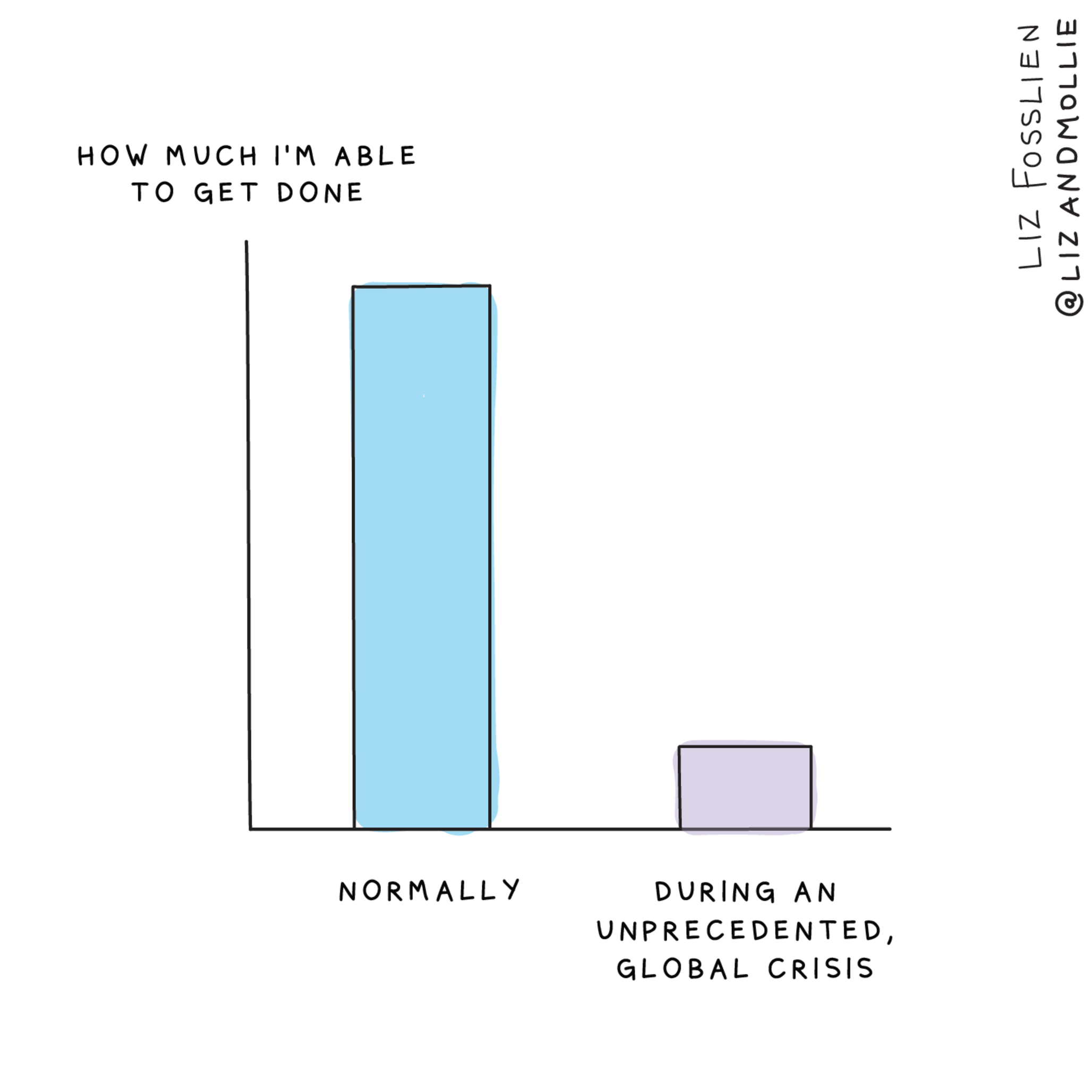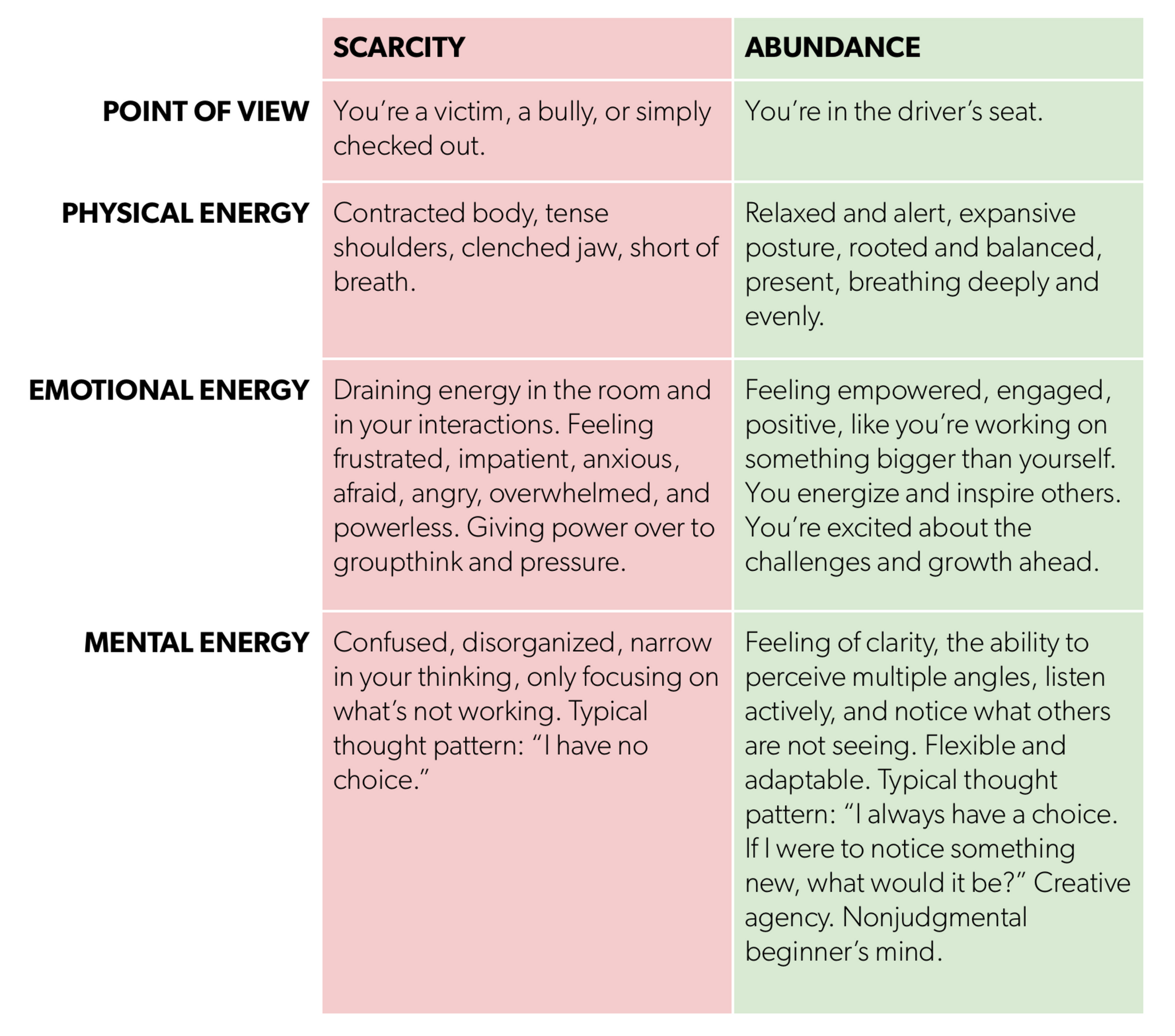At a startup, plans and priorities can change on a dime. That’s not exactly a ground-breaking statement — it’s a concept that’s well-understood and oft-discussed. But what gets considerably less attention is how each pivot brings a corresponding spike, not just to a startup's operating rhythm, but to the emotions of all the humans involved in pulling off these feats.
While focus and productivity hacks abound, emotional management techniques are rarely discussed in the workplace. And because there’s no tidy box to hide your feelings in when it’s time to clock in, this can have dire consequences — particularly at startups, where sonic shifts come quick and are felt by all. Emotions run high in these fast-paced work environments, where the comfort zone is a place not often visited.
The truth is that if this topic hasn’t been a priority before, it’s taking center stage now. Managing and harnessing your emotions before they get the best of you has always been a useful skill, but it’s never been more vital.
Maybe you’re a founder shouldering the heavy load of steering a company through a global crisis. Or a marketer tasked with pivoting to virtual events. Or a manager struggling to support your team through a tumultuous time while simultaneously trying to cultivate healthy remote habits. Or more universally, you’re facing an everyday struggle to navigate a chaotic outside world and an upended life at home, which serves as the backdrop (and now Zoom background) for your work. Whatever the case, every emotion you feel sits beside you at your desk — whether you realize it or not.
Here at the Review, we’ve made steady work of gathering insights from seasoned startup veterans and psychology experts alike who have shared how exactly to better manage emotions at work. Fear not — no general advice to start meditating lies ahead. Instead, we’ll surface tactical steps to lean on based on real-life examples from our experts. And according to them, one thing is certain: There are many small, yet purposeful actions you can take to help you and your team manage emotions, feel mentally energized and, as a result, truly take care of yourself.
While some of these tips are centered around managing a team, there are plenty of takeaways for anyone looking to more effectively bridge the gap between emotions and actions at work. It’s important to note that the goal of these steps is not to completely remove emotions from the equation — we’re only human, after all. Instead, it’s to recognize and name them, channel them in a positive way and make strides to regulate them more effectively.
Of course, that’s easier said than done. But the payoff of successfully calibrating your emotions is huge. As our experts all agree, well-managed emotions allow for more than just building a healthy mindset and avoiding burnout. It enables a winning attitude and, in turn, the ability for you and your team to work better together as the world around you moves at lightning speed.
To find the most effective steps that you can start implementing today, we’ve compiled highlights from some of our favorite Review pieces on managing emotions. We hope that — no matter your role — you find these timely tips both useful and refreshingly specific.
1. Lean on this checklist to process discomfort and build belief in your future self.
As both a psychologist and a co-founder of Coa (a mental health and community-focused startup), Dr. Emily Anhalt, Psy.D has been both the expert coaching founders to navigate their emotions and the founder with all the complex feelings that need sorting. Long hours, pressure to make quick decisions and the stressful search for funding only scratch the surface of icebergs ahead, which only loom larger in troubled waters. Her advice for handling these discomforts? Hit the gym — the emotional gym, that is.
Anhalt believes that, just like going to the gym to strengthen and maintain your muscles and physical health, you need to hit the emotional gym to nourish your mental health. You’ll have a much harder time picking up that dumbbell if you wait until after you’ve suffered an injury, and the same goes for taking mental health seriously in the midst of a crisis. “Preventive care is crucial,” she says.
The ability to work through exhaustion can get you from point A to point B, but it isn’t sustainable. Don’t wait for this emergency to pass — start on your self-care now.
What she means by self-care is improving your emotional fitness in order to cope with this endless series of discomforts. While Anhalt specifically addresses founders, her tips are widely applicable below the top perch. The strongest companies take shape when everyone on the team is emotionally fit. After more than 100 interviews with psychologists and entrepreneurs, Anhalt has identified the key traits to embody as you strive to become emotionally fit. For our purposes here today, one stands out:
Mindfulness

Dr. Anhalt’s definition: Emotionally fit leaders can sit with and process through discomfort. They are able to have tough conversations, be transparent about uncomfortable information, share complicated feedback and sit with a problem until it has been fully thought through.
She likens it to the practice of yoga, where you hold your body in sometimes awkward poses that might feel uncomfortable for a moment. But before you pull out your yoga mat and start practicing that tricky maneuver, take a moment to assess your own reactions when you begin to feel like you’re on shaky ground.
“Some blame everyone else when they’re in an uncomfortable situation. Some turn inward and get really down on themselves. Understanding what your reaction is to discomfort gives you more power to change that reaction if it’s not serving you,” she says.
After you’ve sat with your discomfort (and suppressed that knee-jerk reaction), Anhalt recommends four tactics for processing through it.
- Reflect on one thing you’re too hard on yourself about. Forgive yourself.
- Think of one small thing people could do to support you this week. Ask for it.
- Write down what you appreciate about three people you love. Send it to them.
- Schedule a “worry hour.” Block off a slot on your calendar where you get to be as worried as you want for that amount of time.
That last one struck us as particularly impactful. “It sounds a little trite, but if you schedule time to worry, that means you’re able to be more present for the rest of your day, rather than feeling constantly overwhelmed by tides of anxiety, which ripple out to impact how you interact with others,” says Anhalt. “When you find yourself getting worried, perhaps tossing and turning in bed at 2:00am, gently say to yourself, ‘That’s not my problem right now, that’s ‘6:00pm me’s’ problem. I’ll worry about it then.’”
You often make the mistake of allowing yourself to slip into tomorrow’s worries instead of handling the challenges of the moment. You’re suffering future pain, needlessly.
Time and time again, Anhalt sees what she calls “anticipatory trauma” send people into an emotional tailspin. “There’s a difference between scenario planning for the future versus trying to figure out how to deal with emotions that are tied to things that haven’t happened yet,” she says. “It’s the difference between asking, ‘What is my cash runway if our projected revenue is cut in half for the year?’ and ‘How am I going to handle it if my company fails in six months?’
You may feel like this anxiety is making you more prepared to handle a tough thing if it happens. “In reality, it sends people into a tailspin that’s not really useful,” she says. “Instead, it’s about trusting your future self — the version of you that is better equipped than your present self with greater experience and wisdom to solve problems,” she says. “A quote I love that captures this idea is, ‘You can only see as far as your headlights, but you can still make the whole trip that way.’”
Believe that there is a version of you that will be more qualified to handle any potential future scenarios that are giving you anxiety right now.
Read more of Dr. Anhalt’s insights on building up emotional fitness here.
2. Recognize when you’re in a spiral — and untangle yourself.
Even the emotionally fit can lose their footing — think of these tools not as trampolines to send you sky-high, but more parachutes to slow down the descent and cushion any rocky landings. In risky environments like startups, things can get out of control quickly and before you know it, you find your mood plummeting. And even though it’s normal, we’re trained to check these emotions at the virtual door before log on to work.

Enter Liz Fosslien (if the name sounds familiar, you may have stumbled upon her witty cartoons as one half of internet-favorite duo Liz + Mollie). The current Head of Content at Humu and former Executive Editor at Genius is here to correct the narrative that emotions are better off being treated like an email you can leave in your inbox for later. “We think, ‘These are bad and scary, so we should shut them down’ which perpetuates the harmful myths around emotion. The truth is that being in tune with your emotions makes you smarter overall,” she says. “Being aware of emotions, and the signals they contain, can be an enormous strength.” In other words, they should not be cast aside when you’re at work, but recognized for what they are.
For more specific advice on weathering the emotional storms of a crisis, check out the guide Fosslien put together for us this spring. Today, however, we'll focus on a tactical tidbit she shared with us last year. Drawing from her book “No Hard Feelings: The Secret Power of Embracing Emotions at Work,” Fosslien prescribes tactics to help individuals and managers recognize, embrace and move through emotions that we tend to shy away — like spiraling. Sometimes, negative emotions start out as tiny, irrelevant irritations. Left unchecked, though, they can fester and turn into full-blown spirals. But how do you spot a spiral versus a run-of-the-mill annoyance or frustration?
If you catch yourself thinking these extreme words, like ‘always,’ ‘never,’ ‘catastrophe,’ it’s usually an indication that you’re stuck in a negative thought spiral that’s making you blow a situation out of proportion.
Calmly recognizing the first ripple of a spiral prevents it from becoming a larger wave of emotions. “After you make a mistake — say, you sent an error in a mass email — don’t think, ‘I always mess things up, I’m a horrible person.’ Instead, say, ‘I’ll be more careful next time, and will use this as a chance to show improvement in the future,’” she says.

Here is Fosslien’s step-by-step guide to untangling yourself from these spirals, in the context of an example most of us know very well — when one of your team members suggests a big change right before a deadline:
- Notice difficult emotions. Instead of snapping at your coworker in annoyance thanks to this new curve ball, pause and observe the feeling.
- Label each emotion. The ability to describe complex feelings, to distinguish awesome from happy, content, or thrilled, is called emotional granularity. With emotional granularity on the team project, you’ll be able to realize that when you initially think “I’m feeling annoyed,” you really mean “I’m worried that we won’t have time to make these changes.” And in times like these, Fosslien advises taking another step back. “Remind yourself: ‘This might not be about this specific person or work situation. This is happening because I'm anxious and scared about the future.’”
- Understand the need behind each emotion. Once you’ve labeled each emotion, flip your perspective and explicitly state what you’d like to be feeling instead. Ask yourself “What do I want to feel?” If you’d like to feel calm and prepared instead of anxious and scrambling, figure out what you need to do to successfully relax. That might be ensuring stability: you want the project to stay on track.
- Express your needs. Don’t say, “I’m annoyed by this request for last-minute changes.” Try, “Your edits are good, but because we are down to the wire, stability and predictability are important. What edits do we have time for? How can we make this work so that we’re both happy?”
Read the rest of Fosslien’s insights on reframing “deadly” emotions as superpowers here.
3. Clear through the emotional fog with labels, intentions and scaling questions.
“Somewhere along the way, people decided that there's a certain way to be and act in order to be liked at the office. You’re essentially figuring out how to get people to like you in a way that's disingenuous to yourself, creating distance between ‘work you’ and the person that you see yourself to be. That’s why I decided a long time ago that I wasn't going to wear this mask to work,” says Vanessa Tanicien, Leadership Trainer and Facilitator at LifeLabs Learning.

She notes that as we adapt to working remotely, our ability to keep up this charade is now more challenging than ever. “This is due to something called integration versus segmentation. Your identities were previously physically segmented. You used to leave your house, walk to the train or get in your car and then arrive at the office and suddenly you’re ‘work you.’ Then you got off work and went back to ‘home you.’ Those lines are now blurred,” she says.
As a go-to training program for 700+ companies like Slack, Peloton and Warby Parker, Tanicien and the team at LifeLabs Learning lean on research to simplify some of the most critical (and complex) people skills we need in the workplace — especially the virtual workplace.
“Keeping up those emotional barriers now is much harder. It takes a lot of mental energy to maintain that divide when there are no more cues to let the brain know that it's in one place versus another. This new level of integration pushes people to be more real and show up in ways they haven’t before. As a leader, you have to be prepared for that. It’s your opportunity to show that people’s real selves are welcome here. Not only will inviting authenticity increase engagement, it will also allow you to meet people’s real needs,” says Tanicien.
The silver lining to this environment we’re all sharing right now is that people are forced to vulnerably connect and actually have real conversations — we have nowhere to hide, folks.
To get more tactical, the team at LifeLabs outlines a few of their favorite techniques to make space for more productive discussions around emotions — both your own, and your team’s.
Flag early so feelings don’t catch on
Deeply connecting with your team without crossing over into TMI territory means striking a delicate balance between opening up and freely unloading — and it’s a tricky tightrope to walk. Well-intentioned leaders need to stay mindful of emotional contagion — the tendency for a leader’s mood to be “caught” by others on the team. “As humans, we're biofeedback machines for each other. We feel what others are feeling. Affective labeling research shows that when you put words to what you're feeling — whether it's silently in your own head or out loud — it reduces some of the intensity of that emotion for yourself and others,” says Tania Luna, co-CEO of LifeLabs.

Tanicien agrees. “I don’t advocate for leaders to be vulnerable without intention. Adding additional context is critical, especially when we're working at a distance in this virtual setting. Otherwise, people might attribute a negative reason for why you choose to do or share something. It’s Hanlon’s razor at work,” she says.
“Give people the reason at the outset by using intention statements. Use phrases like, ‘I'm sharing this because,’ or ‘Here’s why I think you need to know this.’ For example, instead of just saying ‘Sorry I’m a bit distracted today,’ say ‘I’m a bit distracted today, and I'm telling you this because I want to make sure I’m not causing any anxiety by how I might be acting. Or you can just come right out and say, ‘I’m feeling down today, and I’m sharing that so it’s clear that it’s okay for all of us to have our bad days.’”
Ask scaling questions to pinpoint the issue and target your support

Leaders may be experts at digging into the numbers when it comes to the business — but when it comes to quantifying how the team is feeling, often this metrics-driven approach stops short. “As leaders, we tend to ask very broad feedback questions like ‘How are things?’ You need to get very, very specific. Specificity will allow us to pinpoint exactly where an issue might be and understand how we can remedy it. A tactical practice I love from LifeLabs is what we call the scaling question,” says Massella Dukuly, Leadership Trainer at LifeLabs.
You can apply scaling questions to facilitate more specific, actionable conversations on the often foggy emotions that cloud our day-to-day work. Here’s an example: If your direct report seems overwhelmed, ask how stressed they are feeling on a scale from one to 10. Say they answer 8. Use these scaling questions to pinpoint how you can help:
- What could move you from a 8 to an 7?
- How would a 10 look? How about a 1?
- What keeps the score from being worse?
- When was the last time the score felt good? What was different about that time? How can we apply that today?
We underestimate our teams when we assume that they will demand all the facts or an ironclad plan. People are often just looking for signs of a caring culture — that we’ll be here for them and that, if something’s wrong, we’ll create an avenue for them to share that.
4. Prioritize personal relationships to boost happiness.
“Happier people are more successful, more creative, energetic, resilient,” says Scott Crabtree, founder of Happy Brain Science. Throughout his career climbing the ladder in the gaming and software industries, eventually leading his own engineering team at Intel, Crabtree has found a commonality between his happiest co-workers: They’re also the most productive. Research backs him up on this observation.
We often mistake happiness as simply being something that we are or we aren’t. We don't think about the concrete steps we can take to get there. So how can we harness this specific emotion that does us so much good in and out of the office? Crabtree’s advice is simple: Prioritize people.
“According to the body of research on happiness, this is true of the vast majority of people — when you focus time and attention on your relationships, they improve, and that improves your happiness. You also improve your coping ability because you have more support. Bottom line: Warm relationships can fuel happiness more than any other single factor we have found,” he says.
The number one factor in our happiness is the quality of our relationships.
According to Crabtree, the cliché line “happiness is contagious” actually holds a lot of truth. Thanks to the mirror neurons in our brain, the people adjacent to you can move your mood up or down. “These neurons are the physiological foundation for empathy. We are wired to understand each other’s feelings and intentions.”
This makes managing for morale extremely important at a company because one unhappy person can ripple across an entire team. Similarly, a few satisfied, high-performance people placed strategically throughout an organization can spread positivity and produce even better results. But how can this permeate throughout an organization that’s more physically distant and isolated than ever? To practice happiness and promote its spread throughout your company, Crabtree recommends following these simple steps that are still relevant in our Zoom and Slack-based environment:
- Practice forgiveness. “There’s a saying that holding a grudge is like trying to kill someone else by taking poison, and it’s true,” says Crabtree. “When you forgive someone for something they did to you — maybe they let you down or disappointed you in some way — it’s good for both people, but you’re the one that will feel the effects and become happier almost immediately. All relationships, if they’re real and long enough, experience some bumps in the road. Great relationships are the ones that find a way over those bumps. That’s what you want for your team at work.”
- Celebrate the good stuff. “We all know on a gut level that it’s good to be there for each other during hard times, and it is. It’s bad for a relationship if someone tells you they’re having a bad day and you say, ‘Sorry, I have to go.’ But it turns out it’s even more important for me to be there when things are going great. So if you say, ‘Wow, I’m having an awesome day!’ and I say, ‘Great, I have to go,’ that hurts the relationship even more. On the flipside, it strengthens the bond when I’m ready with a high-five and choose to celebrate with you.”
- Write things down. Whether it’s committing to being kinder to your colleagues or taking tangible steps to deepen rapport even remotely, the action of writing down your intentions is surprisingly impactful. You internalize information that much faster and are able to recall it that much better. “Say where and when you’re going to do something, because when you say where and when, research indicates you’re more likely to follow through and actually do it. After you’ve written it down, say it out loud to someone else. It has the same effect."
- Express gratitude. “It's among the simplest techniques science has found to boost your mood,” Crabtree says. “When you say thank you, you increase your own happiness. Whatever you need to do to remind yourself to say positive things at work, it’s worth it. Your co-workers will benefit, and you’ll be even happier and more successful.”
I know of one executive who puts 10 pennies in his left pocket every morning. Every time he thanks someone or expresses gratitude, he moves a penny to his right pocket. He won’t go home until his left pocket is empty.
Find more of Crabtree’s tips about improving your happiness and relationships at work.
5. Practice noticing and priming to cultivate abundant thinking.
Sought-after executive coach Katia Verresen is well-known in the startup world for her helpful brain hacks and tactical advice. Throughout her time working with Facebook, Stanford, Airbnb and Twitter, Verresen has pushed clients to adopt abundant thinking — a mindset that gives you the creative agency and grit to reach your vision. And Verresen believes that, with it, your physical, mental and emotion energy levels soar. (See the handy chart below for a quick reference.)

The key is shifting into abundance when you’re feeling low. Though there are many ways to achieve the mindset that she outlined, two low-lift practices stand out: noticing and priming.
Train yourself to notice more.
“Abundance is really your ability to see more in your life: More options, more choices, more resources. And that starts with noticing more. The problem is that we’re biologically wired not to notice things,” says Verresen. “It’s just that our brain is designed to see what it’s already looking for and believes. For example, if your belief is ‘it’s impossible’ or ‘I can’t do it,’ then anything that contradicts you will get thrown out.”
Like the best of habits, noticing requires regular exercise. The best regimen: Ask yourself the following open-ended questions when you’re feeling the tug of scarcity:
- If I were to experience this situation differently, what might I notice?
- What are my choices here? (Note: this is not questioning whether you have choices, but rather acknowledging that you definitely do.)
- If I were to perceive something useful here, what would it be?
- If this seemingly impossible task actually is possible, what's my next logical move?
- What's going right in this situation?
- I wonder what it would be like to... (fill in an action that seems to exist outside the scope of possibility.)
- What resources might I have that I’m not seeing yet?
Prime your mind to set the tone.
Priming is engaging in any activity that boosts your emotional and mental energy. Sleeping right, eating well and exercising are part of it, of course, but it can be more granular than that — as simple as taking five minutes to look at photos that make you happy. “If your attitude literally dictates the information your eyes are able to see (or what your mind thinks they see), then you have to prime your mental state to see more,” says Verresen.
It’s critical first thing in the morning, but also anytime you feel yourself going into scarcity mode — when your body contracts or your heart starts pounding. When this happens, being able to shift gears fast makes a world of difference for your well-being and creativity.
Priming gives you the control to decide which version of yourself you want to be.
“I coach people who run big companies, and they rely on ‘power boards’ — stacks of photos they’ve grouped on their phones of peak experiences (past victories, ideally), that give them the mental break they need and shift their energy in the right direction,” she says. “It sounds unlikely or contrived, but you don’t have to believe in magic for it to work sometimes.”
But don’t just pull out your favorite photos from the top of a summit after a long hiking trek or past congratulatory emails only when the road gets bumpy and you feel like you’re losing your grip on the wheel. Here are some of the priming practices Verressen has seen work best:
- Humor. Read or watch something you know will make you laugh. (There’s a proven, scientific connection between humor and creativity at work here.)
- Memories. This is where power boards come in handy. Do you have photos of experiences and people you love? Or it can capture a past big win — something that seemed impossible that got done. Anything that takes you to a happy place and reminds you what you value on a higher level.
- Soundtracks. Some songs or sounds are bound to have positive associations for you. Play them when you’re down, you’ll feel the change.
- Movement. Get up. Walk anywhere. Staying in one place traps you in the same mindset.
- For the extrovert. Find a thought partner who can offer a different perspective. Get around a group that makes you feel happy and supported.
- For the introvert. Find a quiet space to take a break from the noise. Breathe and savor the silence.
To start building the habit, try adding short slots on your calendar prompting you to either take a quick walk or play your favorite pump-up songs. Verresen suggests these research-backed times of day: “11 a.m. and 4 p.m. tend to be when energy drops and these become especially useful boosts at those times,” she says.
In her view, priming is a lot like going back to home base during the day to recharge. “Understand that feeling depleted or hopeless isn’t your fault — it’s just wiring — no big deal. Get off your own case and focus on doing the next constructive thing.”
In every moment and interaction, you have the freedom to choose what you want to be like. A really good leader is the one who knows that — that no situation or reality is forcing them to act a certain way. This gives them that freedom.
Learn more about Veressen’s hacks for emotional management here.
6. Clean up your fighting style.
Poorly-managed emotions often are slow simmer that, left unchecked, lead to one thing we’d all care to avoid: outbursts. When the pot boils over, fights ensue, and everyone involved is stuck cleaning up the mess afterward. Famed psychotherapist Esther Perel dissects these kinds of conflicts every day. As a renowned couples therapist, she also turns her eye towards a different (yet equally important) type of relationship — co-founders — serving as something of a Chief Relationship Officer for companies and startups around the world. She dives into many of these thorny dynamics in her hit new podcast, “How’s Work?”

Whether it’s spats over power and control, respect and recognition, or even a lack of closeness, Perel has had a front-row seat to the emotional conflicts that crop up at growing companies — and how to work towards resolution. Although her tactics are aimed at co-founders, they’re applicable to all forms of relationships. “When we disagree or try to give negative feedback, we often resort to our very worst impulses,” she says. “This tendency puts us at risk of turning small spats into full-on warfare.”
Now to be clear — Perel isn’t advocating for avoiding fights or disagreements altogether. Butting heads about the nearly countless decisions that goes into running or working for a startup comes with the job description. What she is directing us towards is reframing how we fight in those moments of clashing — engaging in a gentle sparring, instead of trying to wind up for a TKO punch.
For Perel, it's about finding tactical ways to navigate conflict while keeping emotions managed. Here’s how:
- Pay attention to what’s working. To break out of a negative mindset — constantly looking for faults and flaws — start keeping a daily list of all the positive things your coworker does. Elevate what they’re getting right, instead of focusing on what they’re getting wrong or what’s annoying you. What do they do for the company that you appreciate? What would you be unable to accomplish without them? Make this list for a full week.
- Don’t throw the kitchen sink at it. Piling on every complaint is a typical — but not at all useful — approach to dealing with conflict. It’s how someone showing up late to a meeting can escalate into a yelling match about how they aren’t pulling their weight. It’s the idea that when a fight starts, I’ll throw in everything I’ve been holding against you. It’s the feeling that you don’t even remember what you started arguing about in the first place. Don’t start talking about the last three years of everything you’ve been through. Focus on fixing one issue at a time.
- Avoid character assassination. A close relative of negative attribution theory: If I do something wrong, it’s circumstantial and tied to a situation, like running late because I got stuck in traffic. But if my coworker does the same, I peg it to their character and what it says about them as a person — like they’re not as invested in the company. Skip these types of fights by thinking about temporary and circumstantial explanations for your co-founder's behavior as you do for your own, as often as you can.
- Figure out if you fight, flight or freeze. We all handle conflict differently. Some get explosive and lash out, while others retreat inward and withdraw. Perhaps the more tight-lipped you get, the more the person is going to ratchet up because you haven’t said a word in ten minutes. If you build a bigger wall, that may make your co-founder bring out a bigger bazooka to knock it down. Understand your respective conflict management styles and have a conversation about them before the next skirmish breaks out so you can better co-regulate.
- Stop talking in categoricals. Statements such as “You always” or “You never” should be stripped out of your vocabulary. We have a tendency to confuse our experiences and feelings with facts, and present the accusation as a fact instead of your experience. Instead say, “You probably don’t, but in this moment it feels like you do this all the time.”
- Start the 10 second shot clock. Howard Markman’s Prevention and Relationship Enhancement Program (PREP) research highlights that when people are in conflict, they don’t listen to more than 10 seconds of someone’s argument before they start building their rebuttal. You might recognize this when you rattle off a list of a dozen complaints, but your coworker zeroes in on just one to litigate. So, try to keep it short. Then pause. Then ask them to reflect back to you what you just said.
“Conflict is what happens when the relationship has been exasperated to the extreme — don’t avoid tough topics or wait until tensions boil over,” says Perel.
Our overt arguments don’t matter as much as the broader themes that are underneath those plotlines. Tune out the noise of what you’re bickering over and dig deeper to find out what’s going on underneath the surface.
